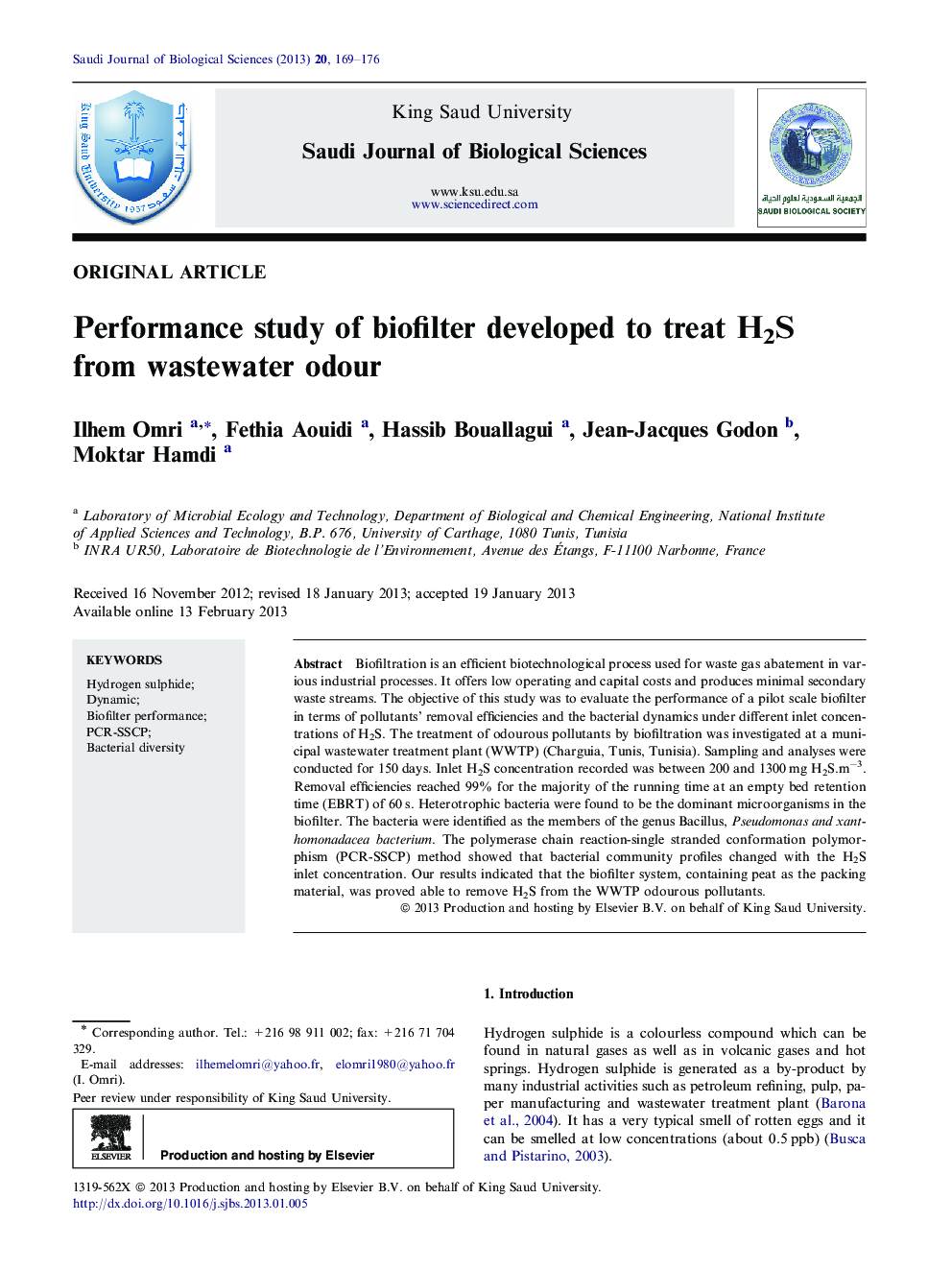| Article ID | Journal | Published Year | Pages | File Type |
|---|---|---|---|---|
| 4406503 | Saudi Journal of Biological Sciences | 2013 | 8 Pages |
Biofiltration is an efficient biotechnological process used for waste gas abatement in various industrial processes. It offers low operating and capital costs and produces minimal secondary waste streams. The objective of this study was to evaluate the performance of a pilot scale biofilter in terms of pollutants’ removal efficiencies and the bacterial dynamics under different inlet concentrations of H2S. The treatment of odourous pollutants by biofiltration was investigated at a municipal wastewater treatment plant (WWTP) (Charguia, Tunis, Tunisia). Sampling and analyses were conducted for 150 days. Inlet H2S concentration recorded was between 200 and 1300 mg H2S.m−3. Removal efficiencies reached 99% for the majority of the running time at an empty bed retention time (EBRT) of 60 s. Heterotrophic bacteria were found to be the dominant microorganisms in the biofilter. The bacteria were identified as the members of the genus Bacillus, Pseudomonas and xanthomonadacea bacterium. The polymerase chain reaction-single stranded conformation polymorphism (PCR-SSCP) method showed that bacterial community profiles changed with the H2S inlet concentration. Our results indicated that the biofilter system, containing peat as the packing material, was proved able to remove H2S from the WWTP odourous pollutants.
